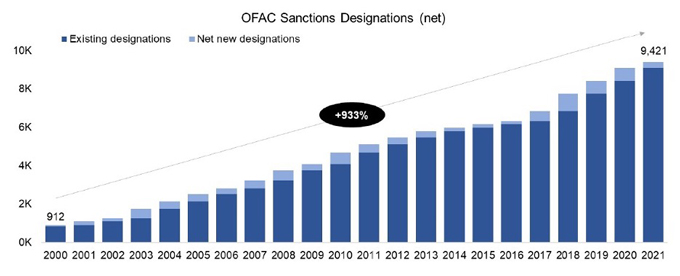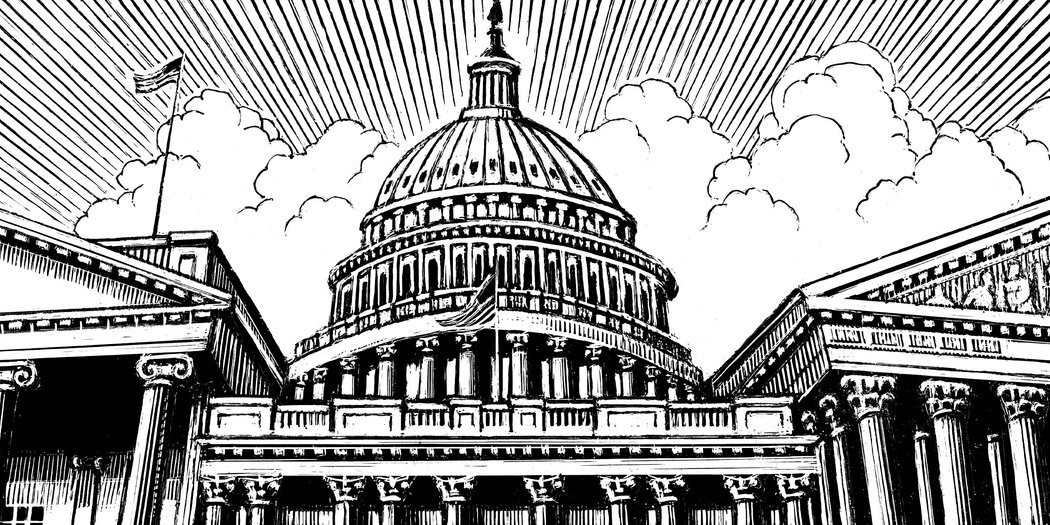The Freedom of Information Act and Deteriorating Federal Transparency Infrastructure – Just Security

Report on the Erosion of Public Transparency and its Implications for Sustainable Development Goal 16
This report analyzes recent actions that have eroded public transparency infrastructure within the United States. These developments present a direct challenge to the principles enshrined in the United Nations Sustainable Development Goals (SDGs), particularly SDG 16, which calls for the development of effective, accountable, and transparent institutions, ensuring public access to information, and substantially reducing corruption.
Systemic Degradation of Transparency Infrastructure in Conflict with SDG 16.6
The foundational requirement of SDG Target 16.6—to “develop effective, accountable and transparent institutions at all levels”—is being actively undermined by the dismantling of the infrastructure that facilitates public oversight. The Freedom of Information Act (FOIA), the primary legal instrument for public access to government records, is facing unprecedented structural rollbacks.
Decimation of Freedom of Information Act (FOIA) Offices
The closure, reorganization, and defunding of agency FOIA offices represent a critical loss of institutional capacity and knowledge. This trend directly obstructs the public’s ability to hold government accountable, with significant impacts observed across multiple departments.
- Department of Health and Human Services (HHS): The closure of FOIA offices, including at the Centers for Disease Control and Prevention (CDC), has created confusion and roadblocks for information requests. In one instance, a court filing noted that the Administration for Children and Families (ACF) had its “entire FOIA office placed on administrative leave,” halting the production of documents until court intervention. This lack of transparency in public health undermines progress toward SDG 3 (Good Health and Well-being).
- Department of Homeland Security (DHS): As of April, 27% of positions in the U.S. Citizenship and Immigration Services (USCIS) FOIA office were reported as vacant. Such a significant reduction in personnel cripples the agency’s ability to respond to requests concerning immigration and security matters.
- Department of Education: Reductions in force have resulted in an inability to maintain production schedules for public records. Filings in FOIA lawsuits acknowledge that the department has lost track of which records have been released, severely hampering oversight of educational policy and its alignment with SDG 4 (Quality Education).
- Other Agencies: The pattern of cuts extends to the Departments of State and Justice, the Office of Personnel Management (OPM), and the U.S. Agency for International Development (USAID). This widespread dismantling of transparency functions is a systemic threat to the goal of accountable governance.
Emerging Barriers to Public Information Access Contravening SDG 16.10
SDG Target 16.10 aims to “ensure public access to information and protect fundamental freedoms.” However, a rise in questionable practices by federal agencies is creating new barriers that prevent journalists, civil society organizations, and the public from exercising this right.
Denial of Fee Waivers and Expedited Processing
Agencies are increasingly denying fee waivers and requests for expedited processing, which are critical for non-profits and news organizations investigating matters of urgent public concern.
- A review of 858 FOIA requests by American Oversight in early 2025 found that of the 315 processed requests, approximately 10% were denied fee waivers and nearly 20% were marked “conditional.”
- The State Department and the Department of Homeland Security accounted for the majority of these denials and conditional designations.
- Denying waivers disproportionately burdens smaller organizations and citizen requesters, undermining the “inclusive” and “participatory” decision-making promoted by SDG Target 16.7.
Arbitrary Administrative Closures
Agencies are increasingly using administrative procedures to prematurely close information requests. This includes claiming a request is not “reasonably described” or providing requesters with an unreasonably short time frame (as little as 10 days) to respond to a “still interested” query before terminating the request. Such practices subvert the legal framework designed to ensure transparency.
Communication and Submission Failures
Technical failures and communication breakdowns have become significant obstacles to submitting and tracking FOIA requests.
- Requesters have encountered nonfunctional email addresses at the State Department, leading to the improper closure of requests.
- The Office of Personnel Management (OPM) public portal has experienced failures, with attempts to seek clarification met with months of silence.
- U.S. Customs and Border Protection reportedly applied an incorrect interpretation of FOIA exemptions to block the release of documents concerning non-governmental organizations, key partners in achieving the SDGs under SDG 17.
Erosion of Record-Keeping and its Implications for Accountability and SDG 16.5
The effectiveness of transparency laws is contingent on the existence and preservation of government records. Recent trends indicate a systemic failure to adhere to record-keeping requirements, which directly threatens efforts to combat corruption as mandated by SDG Target 16.5 (“Substantially reduce corruption and bribery in all their forms”).
Destruction and Removal of Public Records
The permanent loss of public information prevents accountability and erases the historical record.
- In early 2025, pages containing health data were abruptly removed from the CDC website, and the entire USAID website was taken down.
- Reports emerged that USAID staff were instructed to shred documents, prompting litigation over violations of the Federal Records Act. The remote wiping of devices during employee offboarding further increases the risk of record loss.
Use of Ephemeral and Unofficial Communication Channels
The use of auto-deleting messaging apps (like Signal) and personal email accounts for official government business circumvents record-preservation laws. This practice ensures that sensitive discussions are not preserved, denying the public crucial evidence needed to detect improper influence, illegal directives, and abuse of power. Litigation has revealed that messages from a high-level national security group chat on Signal were not preserved by the CIA, even after a court order to do so.
Recommendations for Upholding SDG 16 and Restoring Transparency
The trends documented in this report constitute a severe regression from the global commitment to accountable governance articulated in the 2030 Agenda for Sustainable Development. To realign with the principles of SDG 16 and protect the public’s right to know, the following actions are essential.
- Invest in Transparency Infrastructure: Congress must require the executive branch to address resource shortfalls. This includes increased staffing for FOIA offices and technological upgrades to better manage digital records, thereby strengthening institutions as required by SDG 16.6.
- Strengthen Proactive Disclosure and Judicial Remedies: Promote the proactive disclosure of high-demand records, such as calendars and major contracts, and strengthen judicial remedies to ensure agencies comply with the law.
- Standardize Fair Processing Practices: Establish clear time limits on inter-agency consultations and clarify that a request is “reasonably described” if an employee can locate the records. This will prevent the arbitrary closures that currently obstruct access to information.
- Reform FOIA Exemptions to Fight Corruption: Amend FOIA Exemption 4 to ensure it protects only genuinely proprietary business information, not lobbying or influence-peddling activities, in order to better support the anti-corruption aims of SDG 16.5.
- Enforce Record-Keeping Mandates: Prohibit the use of ephemeral messaging platforms and unofficial channels for government business and enforce strict adherence to the Federal Records Act to ensure a complete paper trail exists for public accountability.
Vigilance in documenting and resisting these erosions of transparency is paramount. The ability to achieve the Sustainable Development Goals depends on an informed society empowered to hold its leaders accountable, a principle that is sustained by a strong and protected Freedom of Information Act.
1. Which SDGs are addressed or connected to the issues highlighted in the article?
-
SDG 16: Peace, Justice and Strong Institutions
The article’s central theme is the erosion of government accountability, transparency, and the rule of law, which are core components of SDG 16. It details the weakening of the Freedom of Information Act (FOIA), an essential mechanism for ensuring “effective, accountable and transparent institutions.” The text discusses the “dismantling of public transparency infrastructure,” the defiance of “federal court orders,” and the hollowing out of “structural checks against self-dealing,” all of which directly relate to building peaceful, just, and inclusive societies with strong institutions.
2. What specific targets under those SDGs can be identified based on the article’s content?
-
Target 16.10: Ensure public access to information and protect fundamental freedoms, in accordance with national legislation and international agreements.
- The entire article is a case study on the challenges to this target. The Freedom of Information Act (FOIA) is the primary “national legislation” discussed for ensuring “public access to information.”
- The article highlights direct threats to this target, such as the “decimation of FOIA offices,” “a rise in denials, delays, and office closures,” and the “destruction of important records,” which collectively undermine the public’s right to know.
-
Target 16.6: Develop effective, accountable and transparent institutions at all levels.
- The article argues that the weakening of FOIA threatens to “hollow out a core pillar of government accountability.”
- It provides specific examples of institutional decay, such as the closure of FOIA offices at HHS, CDC, and other agencies, leading to a loss of “valuable institutional knowledge” and an inability to respond to public requests, thereby making these institutions less effective, accountable, and transparent.
- The text also points to “communication breakdowns,” including “nonfunctional email addresses, and conflicting instructions,” as evidence of institutional ineffectiveness.
-
Target 16.5: Substantially reduce corruption and bribery in all their forms.
- The article explicitly states that FOIA is one of the public’s “most effective checks on corruption” and that it “has long helped expose corrupt actions, government misconduct and waste, and undue influence.”
- By detailing the systematic weakening of FOIA, the article implies that the ability to detect and deter corruption is being severely diminished, thus working against the goal of reducing corruption.
3. Are there any indicators mentioned or implied in the article that can be used to measure progress towards the identified targets?
-
Implementation of Public Access to Information Laws
- Number of information requests: The article mentions that in Fiscal Year 2024, “more than 1.5 million requests for records were submitted,” indicating a high public demand for information.
- Response times and backlogs: The text repeatedly refers to “unconscionable delays in the release of records, beyond the statute’s 20-day requirement” and “worsening backlogs,” which serve as direct measures of the law’s ineffective implementation.
- Rate of request denials: The article documents “a rise in concerning patterns,” including a review of 858 requests where “roughly 10% had been denied fee waivers.” This provides a quantifiable indicator of reduced access.
- Administrative closures: The article notes “a growing number of accidental closures or closures based on vague or arbitrary claims,” which can be tracked as an indicator of obstruction.
-
Institutional Capacity and Functionality
- Staffing levels in transparency offices: A key indicator mentioned is the reduction in personnel. For example, “more than a quarter (27%) of the positions in the U.S. Citizenship and Immigration Services’ (USCIS) FOIA office were ‘vacant’ or ‘unmanned’.”
- Destruction of public records: The article points to incidents where staff were “instructed to shred critical documents” and the use of “auto-deleting communication platforms” like Signal. The frequency of such incidents is a critical negative indicator.
- Number of lawsuits to enforce access: The article refers to the “sheer number of active transparency-related lawsuits” as evidence of “agency intransigence,” making litigation frequency a proxy indicator for institutional failure to comply with the law.
4. Create a table with three columns titled ‘SDGs, Targets and Indicators” to present the findings from analyzing the article.
| SDGs | Targets | Indicators (Mentioned or Implied in the Article) |
|---|---|---|
| SDG 16: Peace, Justice and Strong Institutions |
|
|
Source: justsecurity.org

What is Your Reaction?
 Like
0
Like
0
 Dislike
0
Dislike
0
 Love
0
Love
0
 Funny
0
Funny
0
 Angry
0
Angry
0
 Sad
0
Sad
0
 Wow
0
Wow
0



























;Resize=805#)



















































